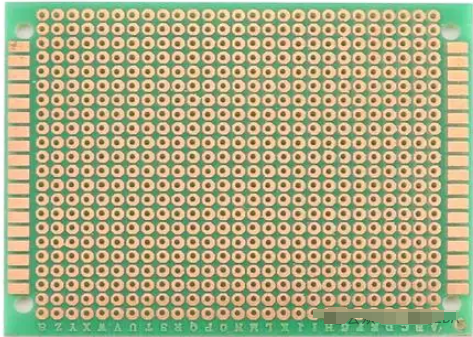

Let’s continue to learn about the last two types of holes found on HDI PCB.
1. Plated Through Hole
Plated Through Holes are internally tin-plated holes, such as vias and plated through-holes for insertion of component leads. These holes have a metal connection in the middle of the hole wall to connect the TOP and BOTTOM layers. During soldering, solder can also flow into the hole to enhance the strength of the solder joint.
2. No-Plated Through Hole
NPTH (Non-Plated Through Hole) holes are holes that are not tin-plated internally and are typically used for alignment purposes. Since they do not require soldering, no pad is retained. However, the processing requirements for NPTH holes are much higher than for PTH holes. For example, if a PTH hole with a designed diameter of 1.0mm is made using a 1.0mm drill bit, it might actually create a 1.05mm hole, which, after internal tin plating, results in a hole diameter of exactly 1.0mm.
NPTH holes, on the other hand, cannot be plated. If the hole is drilled too large, the entire PCB becomes unusable. It is necessary to consider the plating of the hole in advance. Additionally, NPTH holes do not have pads, so if the drilling is off-center, it can easily cut into adjacent traces. Therefore, NPTH holes generally require a 0.25mm no-routing space around them. PTH holes, which have pads, do not need to consider the risk of drilling off-center.
So those are all kinds of holes we usually using on HDI PCB, if you want to learn more about them, you ask our sales while you taking orders with us.